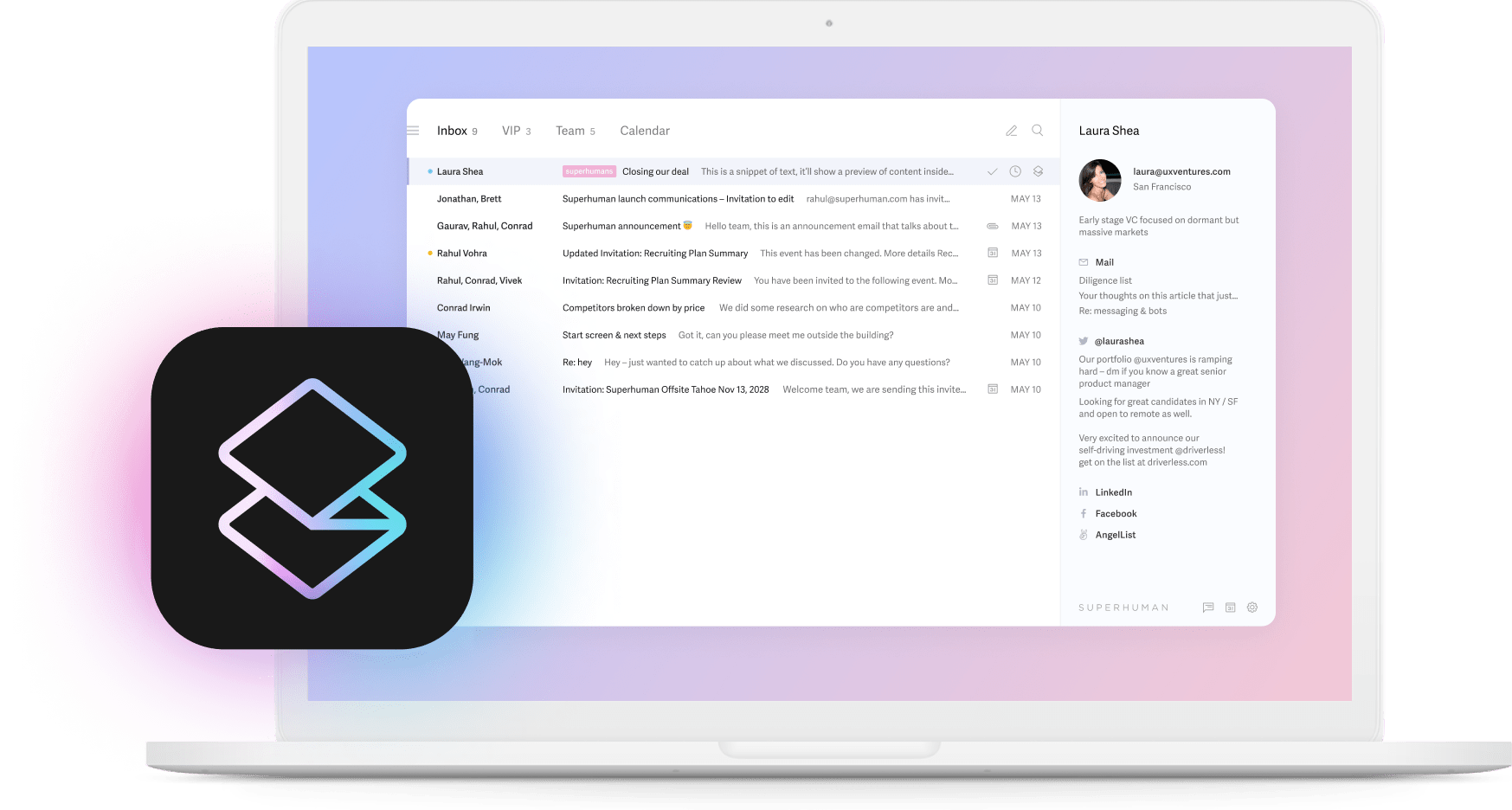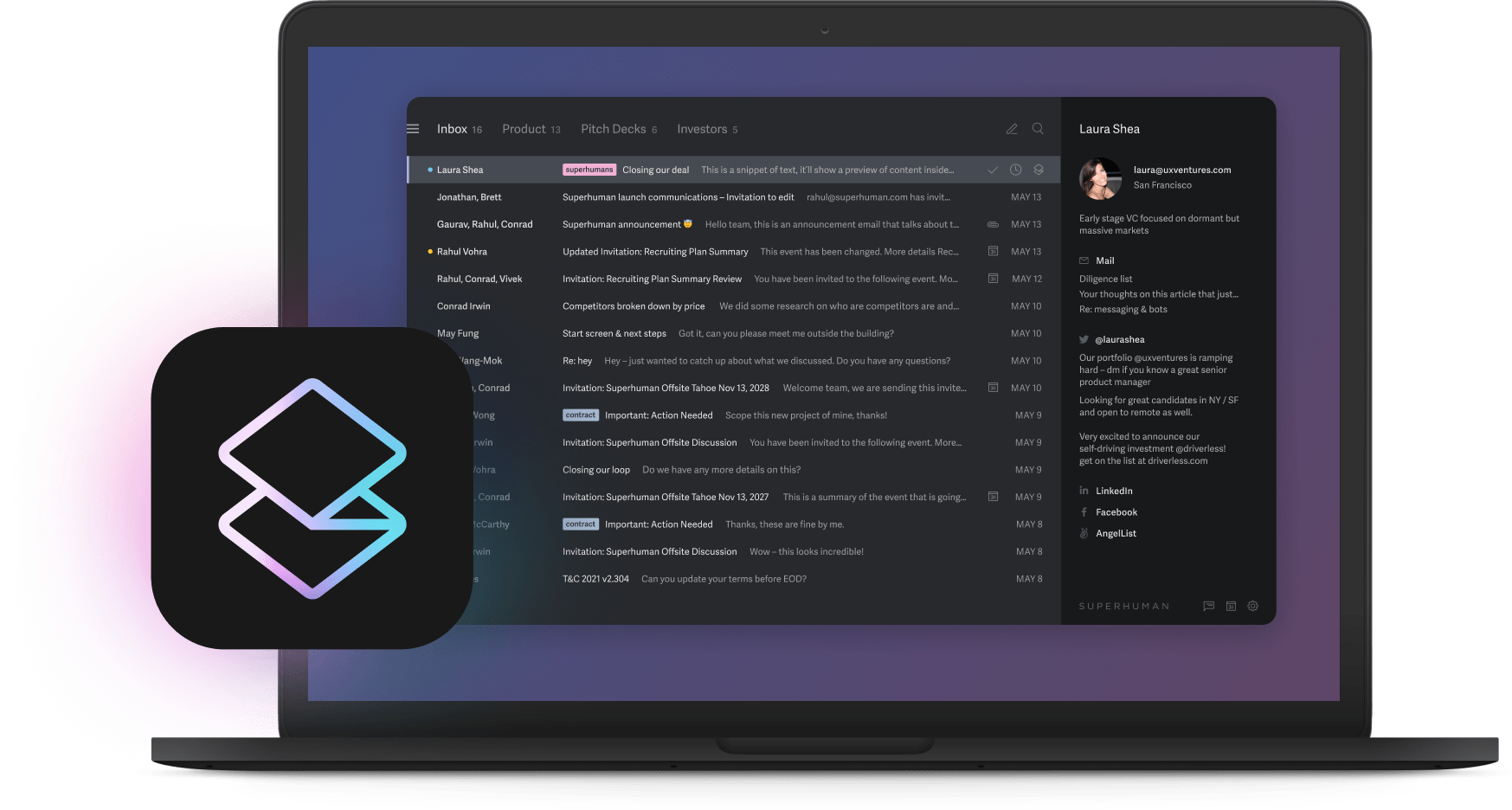
We live in a world with more access to knowledge and information than ever before. And while that sounds great for accomplishing more, it also comes with a big roadblock: distractions. Sometimes, what we need to overcome distractions and get things done is a productivity system.
Productivity systems can help individuals or teams, and can be applied to specific projects or goals — or your everyday life. Ready to learn about some of the most popular productivity systems, and find one that can work for you? Read on.
What are productivity systems?
Productivity systems are sets of practices, guidelines, methodologies, and tools that help people get things done efficiently and effectively.
They can be used for work or personal projects and tasks. They can help individuals or teams. They can include productivity tools, or they can be simple frameworks that help you approach and think about your to-do list. The important thing is that a good productivity system should help you maximize your productivity so you can save time for what matters.
Why do we need productivity systems?
Sometimes being productive isn't as easy as just doing the work. We're faced with a lot of obstacles. Even the number of decisions you have to make throughout your workday can create an obstacle to productivity. A good productivity system helps ensure you have a plan in place — and reduces the number of decisions you need to make in a day.
Productivity systems also help organize and store information so you aren't tasked with remembering all of it, all the time. Scientists don't know exactly how much information we can stow away and accurately recall at any given time, but they do know that it's limited.
While everyone can benefit from a productivity system, different people will benefit from different kinds of systems, and in different ways. Below, we'll describe 16 of the most popular productivity systems — the ones experts, leaders, and other productive people swear by. All that's left to do is choose the one you want to try first.
16 productivity systems to try
The best productivity system will vary for different people, tasks, projects, and needs. Whether you're looking to boost your personal productivity, organize your action plan for a single project, or implement a system across your entire team or organization, there's a productivity system for that.
But how do you choose the right system for your needs? As you're learning about each one, consider these factors to help you evaluate them:
- Your goal is to get more done in less time. While productivity systems may take some time to learn, implement, and get used to, they should become effortless over time.
- You don't have to pick one system and stick to it forever. One method may work for a certain job or project, and another method may work better for a future job or project. Be flexible.
- Productivity systems aren't hard-and-fast rules — think of them more like guidelines. The methods outlined below are powerful, and they've been used by a lot of successful people. But the way to get the most out of them is to mold them to fit your own specific work style and needs.
Without further ado, let's get to the list: here are 16 productivity systems you should know about.
- The Inbox Zero Method
- The simple to-do list
- Bullet journaling
- Getting Things Done (GTD)
- SMART goal-setting framework
- Pomodoro (time blocking)
- Calendar blocking
- Eat the frog
- Single-tasking or task batching
- The Eisenhower Decision Matrix
- Most Important Tasks (MIT)
- Must, should, could, won't, or Moscow method
- Kanban cards
- Daily trifecta or the Ivy Lee method
- Don't Break The Chain
- The Zen to Done System
Let's get started.
1. The Inbox Zero method
If you want to turn your email inbox into a productivity system, the Inbox Zero method is for you.
Inbox Zero is an approach to email management that has two goals:
- To keep your inbox empty (or as close to empty as possible) at all times
- To keep your inbox from occupying any more of your time than absolutely necessary (the Inbox Zero method's creator once wrote that the "zero" in the name refers to "the amount of time an employee's brain is in his inbox")
There are different approaches to achieving (and maintaining) Inbox Zero, but if you want to set yourself up for success, you need the right tool: Superhuman. Superhuman is the fastest email experience on Earth, but it's also designed with features meant to help you reach Inbox Zero and stay there for good.
But there's more to Superhuman than just features. With a truly beautiful UI made with the principles of game design in mind, we're bringing joy to Inbox Zero. If you're ready for email to be your most powerful productivity tool, sign up for Superhuman today.


2. The simple to-do list
The most classic productivity system is one that existed long before the digital age: the simple to-do list.
For some people, creating a task list is all it takes to stay on top of work or personal responsibilities.
The upside to this system is that it's easily customizable — you can add whatever information you need to make your list most helpful and effective, from due dates to priority levels.
The downside to a to-do list as a productivity system is that it doesn't provide a lot of structure — many people need a system that operates more like a framework to help them organize their time and prioritize tasks.
3. Bullet journaling
Bullet journaling is almost an extension of a to-do list — it's a system of using planners called Bullet journals to create lists, calendars, trackers, and records, and to take notes, organize thoughts, and more. Bullet journaling doesn't have to be done in a branded Bullet journal — and there are now digital versions if pen-and-paper isn't your speed. But what sets this method apart from others is how infinitely customizable it is — you can use your Bullet journaling in literally any way that helps you up your productivity.
The upsides? This method is creative and flexible. There's also a robust community of Bullet journalers, so you'll have no lack of inspiration and accountability partners, if that's what you need.
The downside is that Bullet journaling lacks any specific structure, so for anyone who craves a framework or rules, this may not be the ideal productivity system.
4. Getting Things Done (GTD)
The Getting Things Done Method (GTD) is one of the most well-loved project management systems out there. Created by David Allen, who penned the book by the same name, it follows a rigid, five-step structure designed to help you stay organized when you live in a sea of tasks and to-dos.
Here's how GTD works:
- Capture: Move to-dos from your brain into an external source, which can be anything from a simple list to a task management app.
- Clarify: Go through each to-do item one-by-one and determine if it's immediately actionable.
- Organize: Sort non-actionable items into "trash," "maybe," or "reference". Decide the next steps for actionable items.
- Reflect: Periodically review your entire system to remove finished items and clarify and organize new items as needed.
- Engage: Sort next steps for actionable items by priority, context, time available, and energy available to determine the order in which to complete them.
Learn more about the Getting Things Done Method: 12 apps for getting things done
GTD has a lot of upsides. It's beloved by productivity experts for a reason — it's an extremely organized and efficient way to track and manage tasks.
The major downside is that GTD is complex. It has more of a learning curve than most other productivity systems, and its rigidity won't appeal to those who like more flexible frameworks.
5. SMART goal-setting framework
The SMART goal-setting framework is another productivity system that's more complex and rigid. It's also perhaps better suited to helping you focus your priorities and next steps at the beginning of a large project, rather than as a day-to-day framework.
SMART goals is a great way to take a big-picture idea and start breaking it down into actionable steps and tasks, by asking yourself a series of questions. Goals that follow the SMART framework must be:
- Specific
- Measurable
- Actionable
- Rewarding
- Time-bound
One of the upsides of the SMART framework is that just about any goal or project can be adapted to fit it — and by adapting your goals to fit the framework, you simultaneously make them more actionable and thus, more achievable.
A potential downside to this method is that it works better for large, long-term, big-picture goals and projects, and can be too high level for day-to-day tasks.
6. Pomodoro (time blocking)
The Pomodoro technique (also known as time blocking) was developed by Francesco Cirillo, and involves using a timer to break your workday into periods of intense, focused work, separated by short breaks in between. A classic Pomodoro schedule is a 25-minute work sprint, followed by a five-minute break, with a longer break after you repeat the cycle three to five times.
Pomodoro is a simple method that can help avoid procrastination and distractions. It can be worked into just about any workflow, and can be combined with other productivity systems, making it one of the most versatile methods to use.
One potential downside to pomodoro is that the work sprints can be short — be mindful of this, and adjust them based on the tasks you're working on so you don't find yourself taking a break as soon as you hit your stride.
7. Calendar blocking
Calendar blocking is a time management system beloved by productivity experts for its structure and accountability. It involves creating blocks of time within your calendar and assigning tasks to them. Eventually, your entire day should be scheduled, with dedicated time planned out for every task on your to-do list, as well as meetings, breaks, and personal responsibilities.
Calendar blocking is a great way to make sure you dedicate time to every task you need to get done each day. It's likely to work well for people who have trouble staying focused on their to-dos and stay busy all day, without ever feeling truly productive.
If you're shared Google Calendar with your team, they'll know exactly when you're free/busy. Which makes calendar blocking more effective.
But a potential downside to calendar blocking is that its rigidity doesn't allow for spontaneity. If you're likely to have urgent, but unexpected, tasks come up throughout the day, calendar blocking may hinder you more than it helps.
8. Eat the frog
Have you ever had a task on your to-do list that you dreaded so much that it paralyzed you? You put off the unwanted task, but also didn't get anything else done because of its shadow looming over your day.
Eat the frog is a productivity system meant to combat this very common problem. In this system, you start your day with the task you're dreading most — getting it out of the way when you have the most time, energy, and motivation. Then, tackle your second-hardest task, and so on — as it gets later in the day, your work should get easier, as you only have simpler and less dreaded tasks left.
This productivity system is great for those who are prone to procrastination. It's also ideal for accountability for getting tough tasks and projects done on time.
A potential downside to this system is that it requires being able to quickly and easily prioritize your task list to put everything in order from most to least difficult. That kind of prioritization can be a tricky task of its own for some people — if that's you, then eat the frog may not be an ideal system.
9. Single tasking or task batching
Single tasking is a productivity system that helps promote focus on just one task at a time. To use it, choose the task you want to focus on and then eliminate all distractions that might take your attention away from that task. Closing unneeded browser tabs, turning off notifications, and blocking social media sites are common tricks used when single tasking.
Task batching is a variation, where you work on a set of tasks that are similar all at the same time. This allows a sort of multitasking, but without context switching in between tasks that can throw off your concentration or focus.
Single tasking and task batching are great systems for those who struggle with distractions. And in our digital, distraction-filled world, anything you can do to reduce the noise around you while you work can be valuable for staying focused and on-task.
The biggest potential downside to single tasking or task batching is that it requires you to go "dark" by closing potentially distracting programs and turning off notifications. If your job or role requires you to be reachable, this might be a difficult system to implement effectively.
10. The Eisenhower Decision Matrix
Former President Dwight D. Eisenhower once famously said, "What is important is seldom urgent and what is urgent is seldom important." That quote became the basis for the Eisenhower Matrix, a prioritization tool that today's most influential leaders use to guide their decision making.
The Eisenhower Matrix starts with four boxes on two axes — one going from important to not important, and the other going from urgent to not urgent. This means you can organize your tasks into the boxes like this:
- Urgent and important: Tasks you should do right away.
- Not urgent, but important: Tasks you should work on after your urgent and important tasks are done.
- Urgent, but not important: Tasks you should delegate to someone else.
- Not urgent or important: Tasks you should remove from your to-do list.
This framework is extremely useful for focusing on the tasks on your to-do list that will have the most impact, moving you toward long-term goals. It also helps remove to-dos from your list that shouldn't be there in the first place.
However, most people will find that they spend most of their time on urgent, but not important tasks. Using the Eisenhower Matrix helps identify those, but requires having someone to delegate them to. If you aren't able to delegate any of your work to someone else, you may still end up with more tasks than you can accomplish.
11. Most Important Tasks (MIT)
Most Important Tasks (MIT) is similar to eat the frog, but instead of doing your most difficult or dreaded task first, you start with the most important thing you have to get done. Start by prioritizing your tasks by importance, and then work your way down the list from top to bottom.
This is another productivity system that's great for focusing on what's most impactful, and staying on track with your most important work.
A potential downside is that this system requires you to constantly prioritize, especially as new tasks get added to your list. For those who struggle with prioritization more than focus, this productivity system isn't likely to work as well.
12. Must, should, could, won't or Moscow method
The must, should, could, won't system (also called the Moscow method) is another prioritization framework to help you identify which tasks on your to-do list are most important, and which can wait until later (or be removed from your list altogether).
In this method, you organize your task by:
- Must: Tasks you need to do today.
- Should: Tasks you need to do, but not necessarily today.
- Could: Tasks you could do, but aren't urgent.
- Won't: Tasks you don't need to do that aren't urgent, and should be removed from your list.
This method is very similar to the Eisenhower Matrix, and has similar upsides and drawbacks. It's a great way to focus your time and attention on work that will be most impactful, but it isn't helpful (and can even add stress) if you simply have too many tasks that fall into the "must" category.
13. Kanban cards
Kanban cards are a productivity management system that started in software development, where tasks or projects are divided into categories (some common categories are "to do", "in progress", and "done").
To use kanban cards for your own tasks, write items or projects on sticky notes and move them into different columns on a white board, chalk board, wall, or corkboard (there are also digital kanban boards, if that's more your style).
The benefits to this system are that it's visual and tactile, and will appeal to people who are drawn to those attributes.
A potential downside is that a kanban board typically provides a bigger picture view of an overall project, and may not reflect some of the more granular, day-to-day progress that helps keep us motivated.
14. Daily trifecta or the Ivy Lee Method
The daily trifecta and the Ivy Lee Method are two very similar productivity systems that involve prioritizing your most important tasks each day.
For each system, you spend time at the end of each workday looking over your tasks for the next day. For the daily trifecta, you choose your three most important to focus on. For the Ivy Lee Method, you choose your six most important.
The next day, those are the tasks you focus on. And at the end of the day, you circle back to your list and reassess, setting your daily tasks for the following day.
This is a great system because it helps you make your to-do list more achievable and rotate through it by focusing on a new set of tasks each day.
A potential downside is that some tasks can get pushed back indefinitely, since you only focus on the handful of list items that are most important each day.
15. Don't Break the Chain
We bet you didn't expect to see Jerry Seinfeld on this list. But the famous comedian devised a productivity system of his own that is both popular and effective. It's called "Don't Break the Chain", and it started when Seinfeld committed to writing one new joke each day. Each time he met that goal, he put an "X" on a calendar. Before long, he had a chain of Xs, and his desire to not break the chain created more motivation to keep writing a daily joke.
This system might be better for building habits than for managing day-to-day tasks. If you have a task that you need to do every day, this is a great system for keeping yourself accountable and on-track! But for most of us, who have differing projects and to-dos each workday, this method won't be a perfect fit.
16. The Zen to Done System
The Zen to Done System (or ZTD) is a habit optimization system developed by Leo Babauta. It's based on the GTD method, but designed to appeal to those who want a comprehensive system that's holistic and personalized, not rigid and rules-based like GTD.
ZTD asks users to collect all their tasks and ideas, similar to GTD, but to do so in a portable tool, like a small notebook. Then, there are habits that users are encouraged to adopt:
- Making decisions on tasks quickly, rather than putting them off.
- Choosing 1-3 major goals for each week and day, and accomplishing those first to ensure they get done.
- Focusing on one task at a time without distractions.
It's important to note that ZTD isn't a task management system so much as it's a framework designed to promote personal growth and changing habits. If you want to stay productive by building good habits and growing holistically, ZTD might be the system for you.




